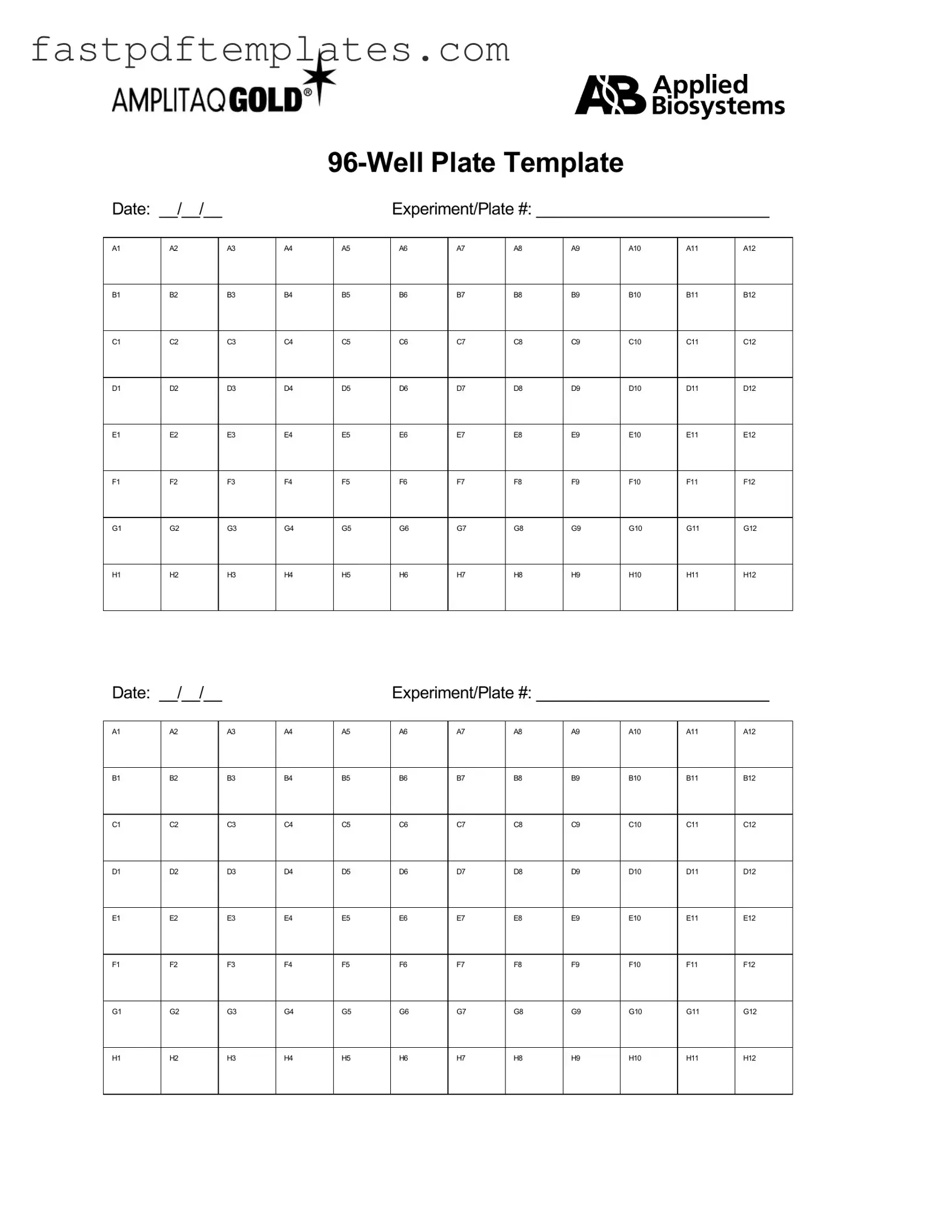The 96 Well form is similar to the Laboratory Information Management System (LIMS) form. Both documents are designed to track samples and manage data in laboratory settings. They allow researchers to organize information about each sample, including its origin, handling, and analysis. LIMS forms often include additional features for data storage and retrieval, making them essential for labs that handle large volumes of samples.
Another comparable document is the Chain of Custody form. This form is crucial in maintaining the integrity of samples during transportation and analysis. It outlines who has handled the sample at each stage, ensuring accountability. Like the 96 Well form, it provides a structured way to document important details, but it focuses more on the legal and procedural aspects of sample handling.
The Sample Submission form shares similarities with the 96 Well form in that both collect essential information before analysis. This document typically includes details about the samples being submitted, such as type, quantity, and specific tests requested. It serves as a checklist to ensure all necessary information is provided, helping to streamline the submission process for laboratories.
Another related document is the Experimental Design form. This form outlines the specific parameters and conditions under which experiments will be conducted. Like the 96 Well form, it is used to organize information systematically. However, the Experimental Design form focuses more on the methodology and objectives of the experiment rather than just the samples themselves.
Lastly, the Quality Control form is similar in that it tracks the standards and protocols followed during testing. This document ensures that all procedures meet specific guidelines, much like the 96 Well form helps ensure that samples are processed correctly. Both forms emphasize the importance of accuracy and reliability in laboratory work, though the Quality Control form is more focused on the testing process itself.

